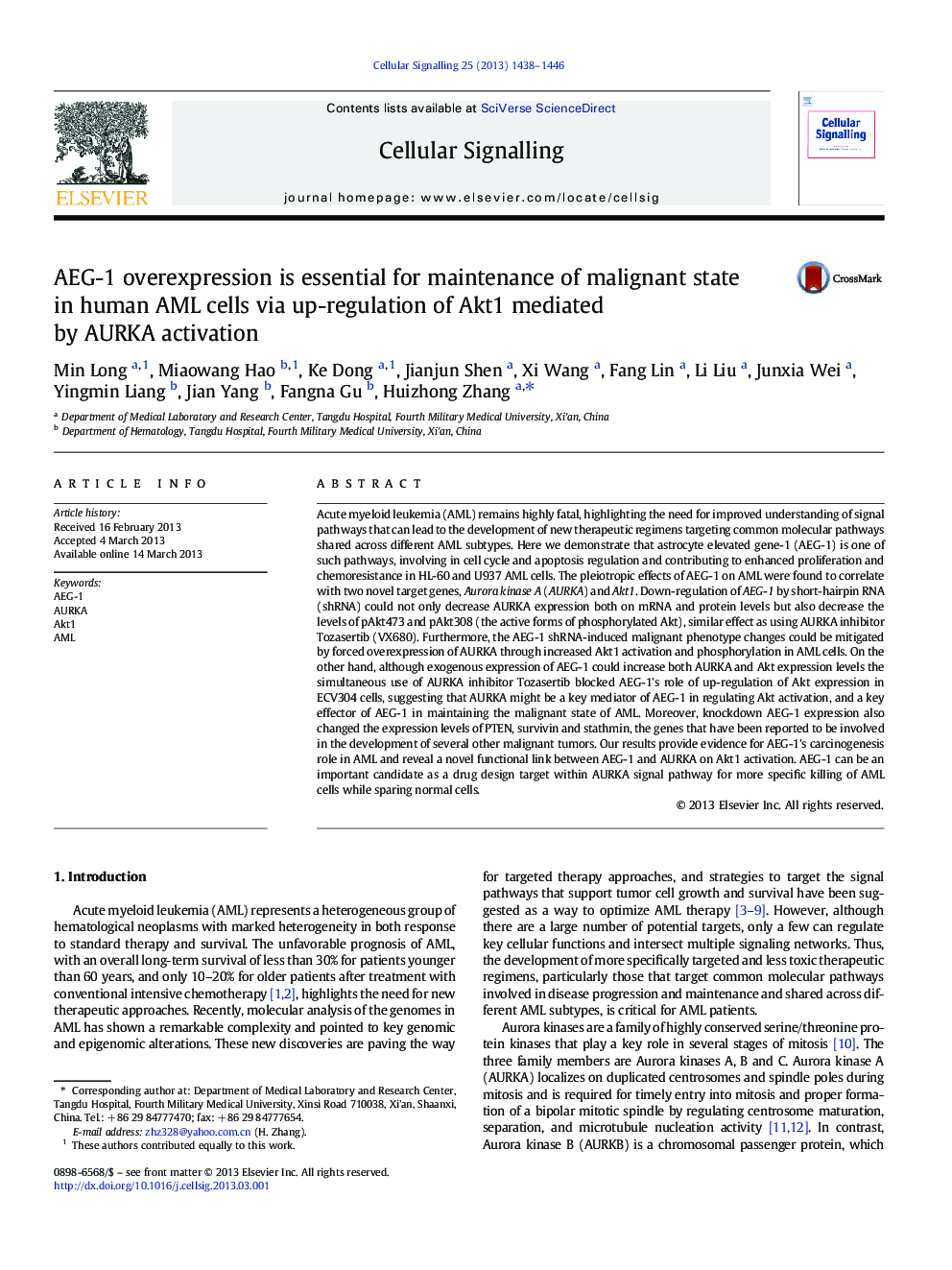| Article ID | Journal | Published Year | Pages | File Type |
|---|---|---|---|---|
| 1964419 | Cellular Signalling | 2013 | 9 Pages |
•We demonstrate AEG-1's carcinogenesis role in AML.•We reveal the relationship among AEG-1, AURKA and Akt.•We provide evidence that AEG-1 expression activates Akt through AURKA's function.•AEG-1 can be AURKA substitute as drug design target for more specific killing of AML.
Acute myeloid leukemia (AML) remains highly fatal, highlighting the need for improved understanding of signal pathways that can lead to the development of new therapeutic regimens targeting common molecular pathways shared across different AML subtypes. Here we demonstrate that astrocyte elevated gene-1 (AEG-1) is one of such pathways, involving in cell cycle and apoptosis regulation and contributing to enhanced proliferation and chemoresistance in HL-60 and U937 AML cells. The pleiotropic effects of AEG-1 on AML were found to correlate with two novel target genes, Aurora kinase A (AURKA) and Akt1. Down-regulation of AEG-1 by short-hairpin RNA (shRNA) could not only decrease AURKA expression both on mRNA and protein levels but also decrease the levels of pAkt473 and pAkt308 (the active forms of phosphorylated Akt), similar effect as using AURKA inhibitor Tozasertib (VX680). Furthermore, the AEG-1 shRNA-induced malignant phenotype changes could be mitigated by forced overexpression of AURKA through increased Akt1 activation and phosphorylation in AML cells. On the other hand, although exogenous expression of AEG-1 could increase both AURKA and Akt expression levels the simultaneous use of AURKA inhibitor Tozasertib blocked AEG-1's role of up-regulation of Akt expression in ECV304 cells, suggesting that AURKA might be a key mediator of AEG-1 in regulating Akt activation, and a key effector of AEG-1 in maintaining the malignant state of AML. Moreover, knockdown AEG-1 expression also changed the expression levels of PTEN, survivin and stathmin, the genes that have been reported to be involved in the development of several other malignant tumors. Our results provide evidence for AEG-1's carcinogenesis role in AML and reveal a novel functional link between AEG-1 and AURKA on Akt1 activation. AEG-1 can be an important candidate as a drug design target within AURKA signal pathway for more specific killing of AML cells while sparing normal cells.
